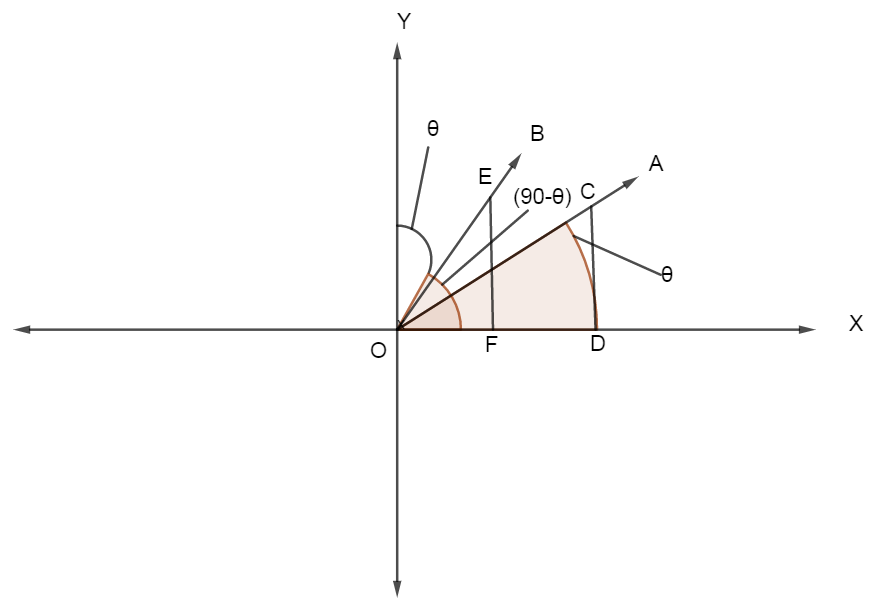
The value of
A. 0
B. 1
C. 2
D.
Answer
504.9k+ views
Hint: First we have to confirm the value of
Complete step by step solution:
In trigonometric ratios of angles
Let a rotating line OA rotate about O in the anti-clockwise direction, from initial position to ending position makes an angle
Again another rotating line OB rotates about O in the anti-clockwise direction, from initial position to ending position (OX) makes an angle
Now, we can observe that
Again a point E is taken on OB such that OC = OE and draws EF perpendicular to OX.
Since,
Now, from the right-angled
Hence

In this diagram FE and OD both are positive. Similarly, OF and DC are both positive.
According to the definition of trigonometric ratio we get,
Now we can write the question as
In the middle position there is a
We know the value of
The value of
Note: Students have to remember the value of
Complete step by step solution:
In trigonometric ratios of angles
Let a rotating line OA rotate about O in the anti-clockwise direction, from initial position to ending position makes an angle
Again another rotating line OB rotates about O in the anti-clockwise direction, from initial position to ending position (OX) makes an angle
Now, we can observe that
Again a point E is taken on OB such that OC = OE and draws EF perpendicular to OX.
Since,
Now, from the right-angled
Hence

In this diagram FE and OD both are positive. Similarly, OF and DC are both positive.
According to the definition of trigonometric ratio we get,
Now we can write the question as
In the middle position there is a
We know the value of
The value of
Note: Students have to remember the value of
Recently Updated Pages
Express the following as a fraction and simplify a class 7 maths CBSE

The length and width of a rectangle are in ratio of class 7 maths CBSE

The ratio of the income to the expenditure of a family class 7 maths CBSE

How do you write 025 million in scientific notatio class 7 maths CBSE

How do you convert 295 meters per second to kilometers class 7 maths CBSE

Write the following in Roman numerals 25819 class 7 maths CBSE

Trending doubts
Where did Netaji set up the INA headquarters A Yangon class 10 social studies CBSE

A boat goes 24 km upstream and 28 km downstream in class 10 maths CBSE

Why is there a time difference of about 5 hours between class 10 social science CBSE

The British separated Burma Myanmar from India in 1935 class 10 social science CBSE

The Equation xxx + 2 is Satisfied when x is Equal to Class 10 Maths

What are the public facilities provided by the government? Also explain each facility




